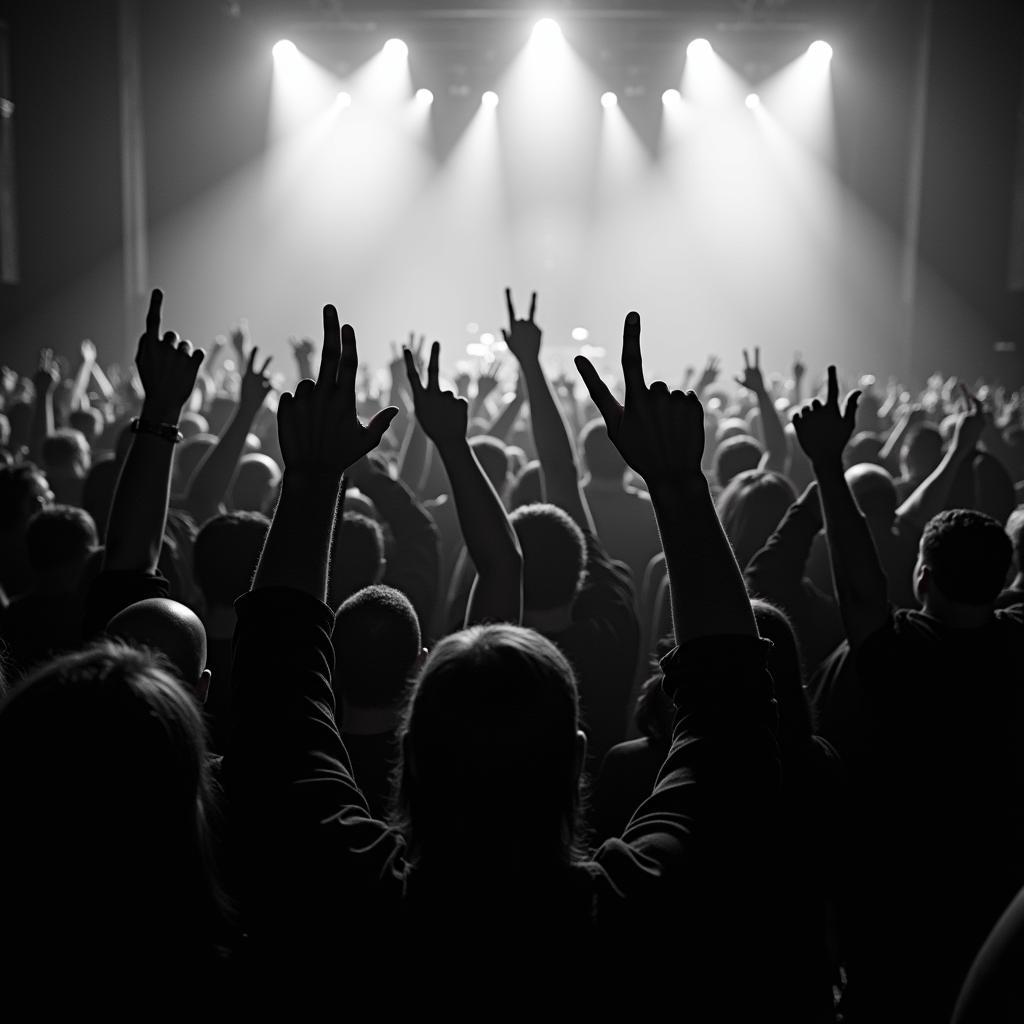Rock music, a genre known for its energy, rebellion, and raw emotion, has transcended generations and geographical boundaries. Along with the music itself, a unique visual language has evolved, becoming synonymous with the rock and roll lifestyle. These symbols, often instantly recognizable, represent the spirit of rock, its values, and its enduring legacy. Let’s delve into some of the most iconic symbols embraced by rock fans worldwide.
The Devil Horns: A Gesture Heard Around the World
 Rock concert crowd displaying devil horns gesture
Rock concert crowd displaying devil horns gesture
Perhaps the most universally recognized rock symbol is the “devil horns” hand gesture. Formed by extending the index and little finger while holding the middle and ring fingers down with the thumb, this symbol has a fascinating and contested history. While often attributed to heavy metal pioneer Ronnie James Dio, its origins are likely more diverse, with roots in ancient symbolism and superstitious practices. Regardless of its true beginnings, the “devil horns” gesture has become a powerful symbol of rock’s rebellious spirit, signifying solidarity, excitement, and a shared passion for the music.
The Skull and Crossbones: A Symbol of Mortality and Rebellion
 Black flag with skull and crossbones on a motorcycle
Black flag with skull and crossbones on a motorcycle
The skull and crossbones, an image steeped in history and symbolism, has been adopted by various subcultures, including rock fans. Originally used as a warning sign of poison and danger, the skull and crossbones took on new meaning in the hands of pirates, becoming a symbol of defiance and disregard for authority. This association with rebellion resonated with the anti-establishment ethos of rock, making it a powerful and enduring visual element in rock imagery.
The Electric Guitar: More Than Just an Instrument
 Electric guitar on stage under stage lights
Electric guitar on stage under stage lights
While not a symbol in the traditional sense, the electric guitar itself has become an iconic representation of rock music. Its amplified sound, capable of producing everything from delicate melodies to earsplitting riffs, embodies the raw energy and power of the genre. Certain guitar models, like the Gibson Les Paul and the Fender Stratocaster, have reached legendary status, intrinsically linked with the sounds and images of rock’s most influential figures.
The Band T-Shirt: A Statement of Allegiance
Beyond gestures and imagery, clothing plays a significant role in expressing rock fandom. The band t-shirt, a simple garment adorned with a band’s logo or album art, has become a badge of honor for rock fans. It’s a visual declaration of musical taste, a way to connect with like-minded individuals, and a powerful reminder of the emotions and memories associated with a particular artist or song.
The Raised Fist: A Symbol of Unity and Resistance
 Silhouette of a raised fist amidst a concert crowd
Silhouette of a raised fist amidst a concert crowd
Often seen at rock concerts and protests alike, the raised fist is a powerful symbol of unity, strength, and resistance. In the context of rock music, it embodies the collective energy and rebellious spirit of both the artists and the fans. The raised fist can represent a shared struggle against societal norms, a celebration of individuality, or a simple acknowledgment of the power of music to unite people.
Rock music, with its rich history and diverse subcultures, has spawned a vast and ever-evolving visual language. The symbols discussed here represent just a glimpse into this world, each carrying layers of meaning and historical significance. From hand gestures to clothing choices, these symbols allow fans to express their passion for the music, connect with a global community, and celebrate the enduring spirit of rock and roll.


